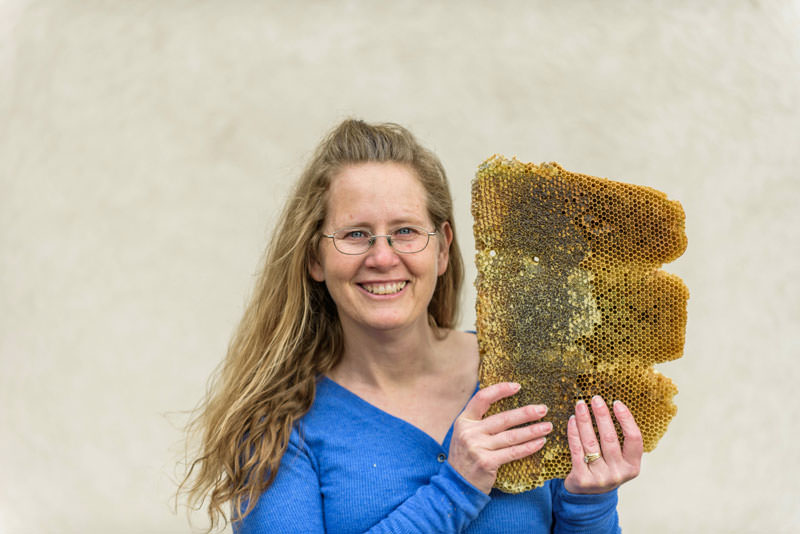Here’s what to do.
In August, when a cottonwood tree fell in Carson City’s Riverview Park and revealed a well-established beehive inside, the folks at Carson City’s Parks, Recreation & Open Space Department knew exactly whom to call: Great Basin Beekeepers of Nevada.
Member and beekeeper Cara Strasser was on the scene, and, after multiple attempts, she was able to capture roughly 10,000 bees.
Strasser is one of two dozen members of the Great Basin Beekeepers of Nevada who have volunteered to remove and relocate unwanted bees from inside homes, trees, pipes, and more. Unlike pest extermination services, which may kill the bees, Strasser and her fellow beekeepers strive to safely resettle the colonies in a safer environment to protect the sensitive bee population.
So what should you do if you find yourself with uninvited buzzing visitors? Strasser says the Great Basin Beekeepers of Nevada has you covered.
Q: What is the difference between a swarm and a hive?
Usually, if you find a hive, that means the bees have set up a permanent home in a house, pipe, or tree — they are not going anywhere. A swarm is when you see a big clump of thousands of bees hanging off of something like a tree or fence post. What has happened is their home has become uninhabitable for whatever reason, or there are too many bees in the hive, so they take off to find a new place to live.
They gorge themselves on honey before they go, and that’s why they’re at their calmest when they swarm — because they’re full of honey. They’ll hang on a tree or something like that for usually around three days, but they can stay up to a week. In that time, they’re sending worker bees out to try and find somewhere else to live, and then they come back and they say, “Hey, I found this new spot.” Then the entire swarm flies to its new home and makes a hive.
Q: What should you do if you find a swarm or feral colony in your yard or house?
If you have a hive on your property, you’ll see bees flying in and out of a crack in your house or a tree as they go to collect pollen. A swarm could be buzzing on a tree branch and won’t have an established hive to go into. If you think you have either of these on your property, you can call a beekeepers club.
At the Great Basin Beekeepers of Nevada, we have a list of volunteers on our website whom you can call to come out and remove a swarm or hive. We’ve given our information out to sheriff’s departments, tree removal services, and exterminators, too.
If it’s a swarm, I use a bucket to collect the ball of bees. In tough cases, we can use a specialized vacuum to collect the bees, but that’s a last resort since some bees can get killed in the process.
Q: What do you do with the bees you collect?
We call them “free-bees.” There’s always somebody looking for bees. A lot of our beekeepers lose more than 50 percent of their bees each year for different reasons. There is a way to incorporate them into a current hive, but usually they’ll fight because the only bees that are allowed to go in other hives are the drones, which are the males. Most often they are used to start a new hive.
We need bees. They pollinate almost everything we eat, and they are amazingly fun and interesting if you just sit and watch them.
Claire McArthur is a freelance writer who is currently contemplating adding bees to her ever-growing brood of animals (don’t tell her husband).
To contact a member of GBBN to remove unwanted bees, visit Greatbasinbeekeepersofnevada.org/swarm-list.


